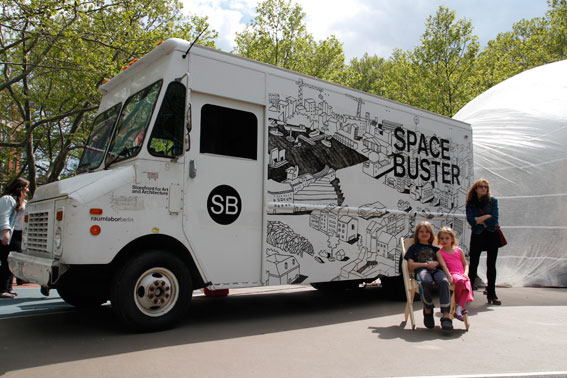Invited by Storefront for Art and Architecture the SPACEBUSTER was developed and designed to explore the qualities and possibilities of public space in New York City in 2008. Spacebuster interacts with the architectural and the social space and its conditions. It opens urban space for temporary collective uses.
2011 we were invited again, to reactivate the SPACEBUSTER as part of the Festival of Ideas for The New City.
Auf Einladung der Storefront for Art and Architecture haben wir 2008 den Spacebuster entwickelt und gebaut um die Qualitäten und Möglichkeiten im öffentlichen Raum New Yorks zu erkunden. Der Spacebuster reagiert auf den architektonischen und sozialen Raum und seine Bedingungen. Er öffnet den Stadtraum für temporäre gemeinschaftliche Nutzungen.
2011 sind wir erneut vom eingeladen worden um den SPACEBUSTER im Rahmen des Festival of Ideas for The New City zu reaktivieren.
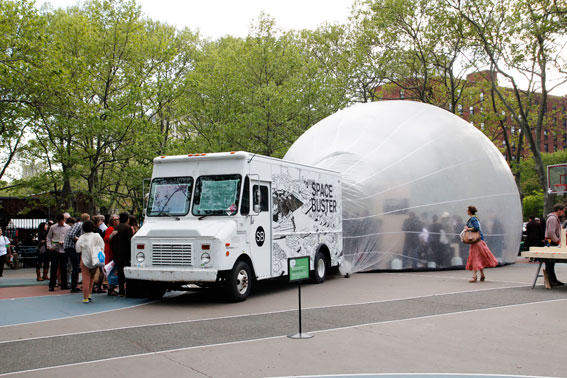
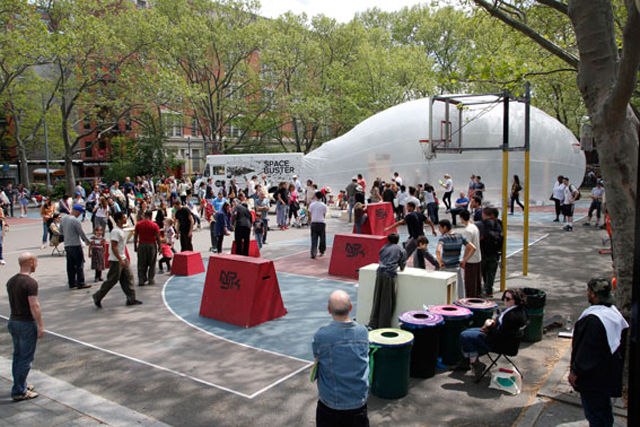
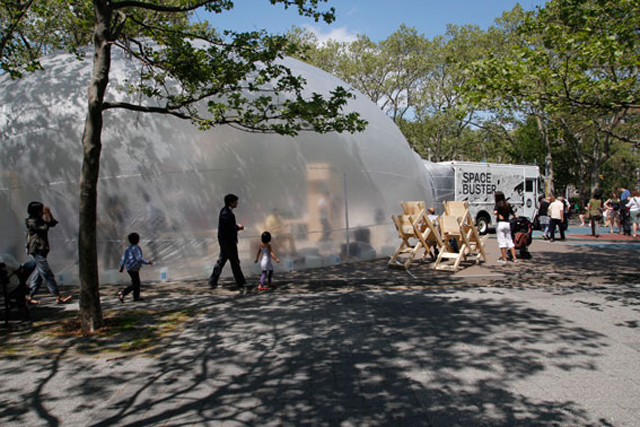
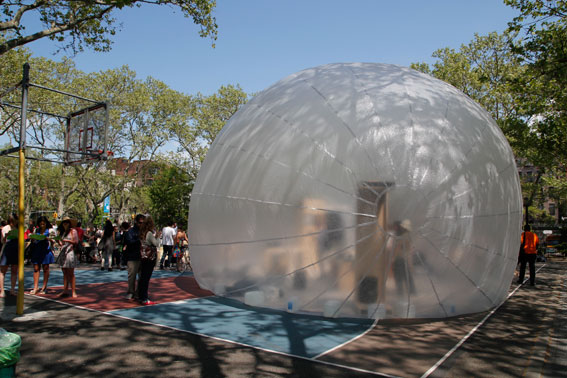
A „Draw-Think-Tank“ on the topic „Emerging Territories of Movement“ organized by the Storefront for Art and Architecturetook took place in the SPACEBUSTER.
Im SPACEBUSTER fand ein vom Storefront for Art and Architecture organisierter „Draw-Think-Tank“ zum Thema „Emerging Territories of Movement“ statt.
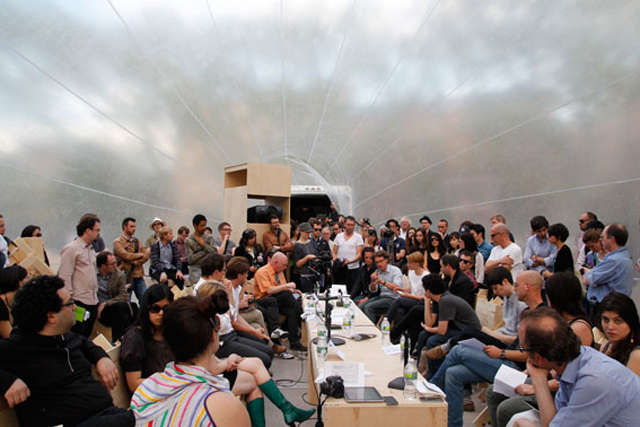
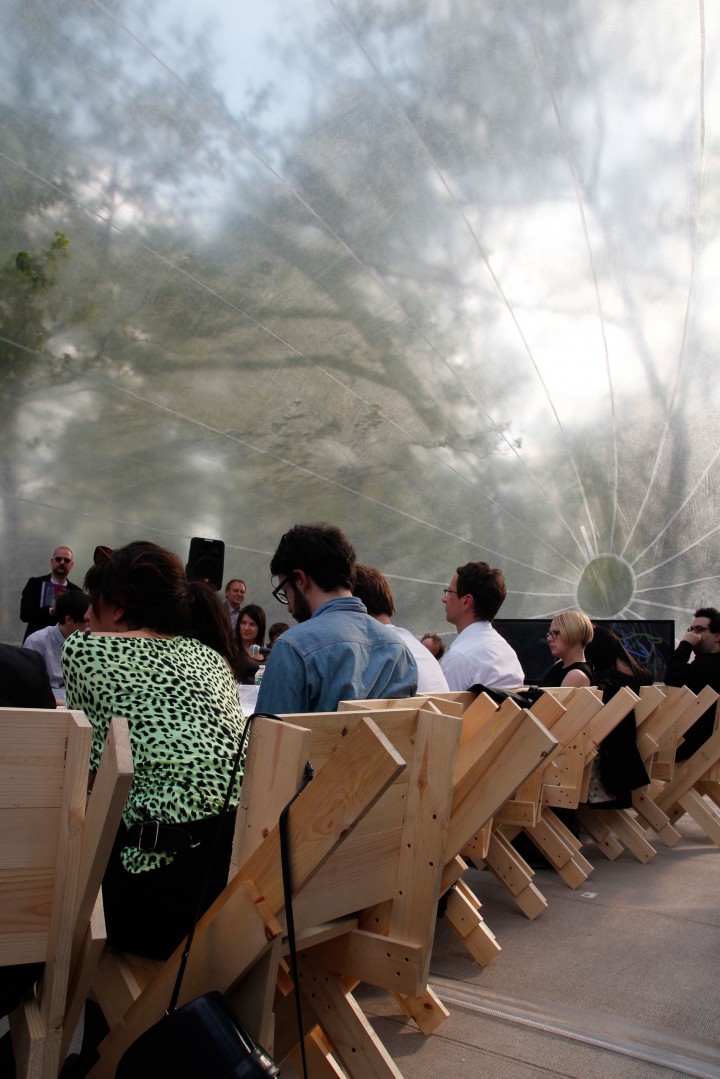
At the Festival of Ideas for The New City the NEW YORK CITY CHAIR was build by visitors and local residents.
Im Rahmen des Festival of Ideas for the New York City konnten Besucher und Anwohner den NEW YORK CITY CHAIR bauen.
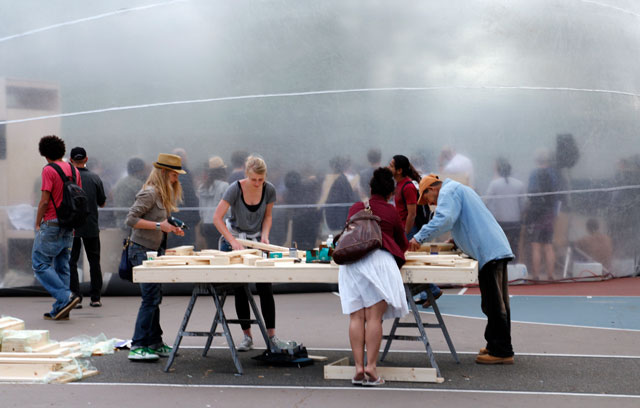
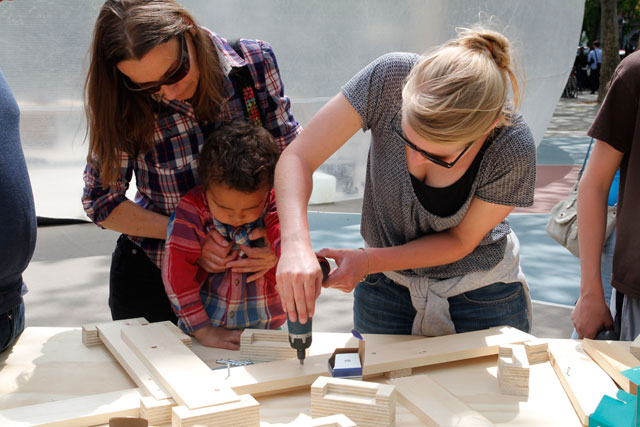
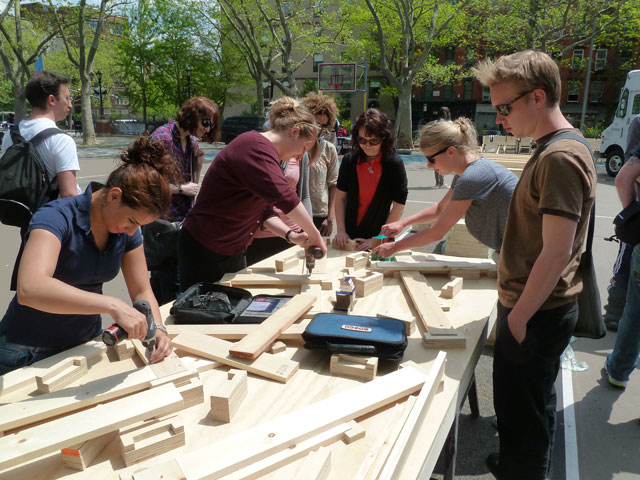
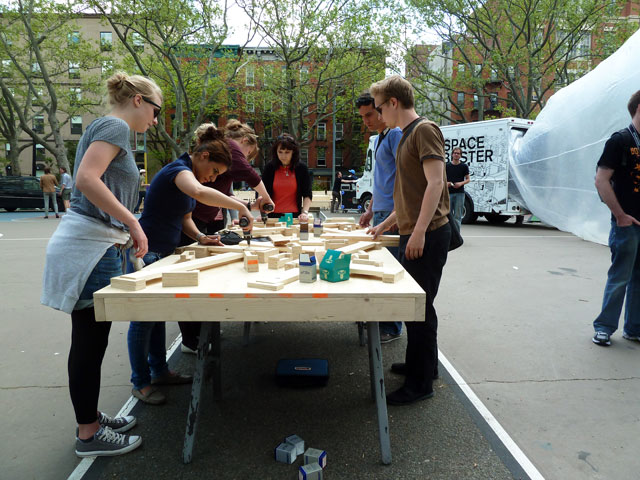
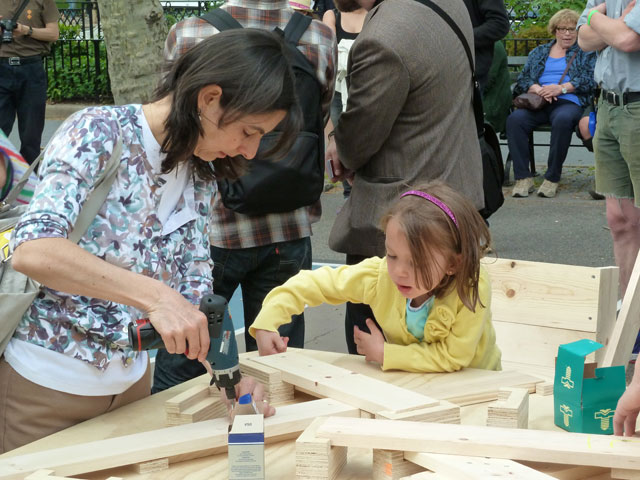
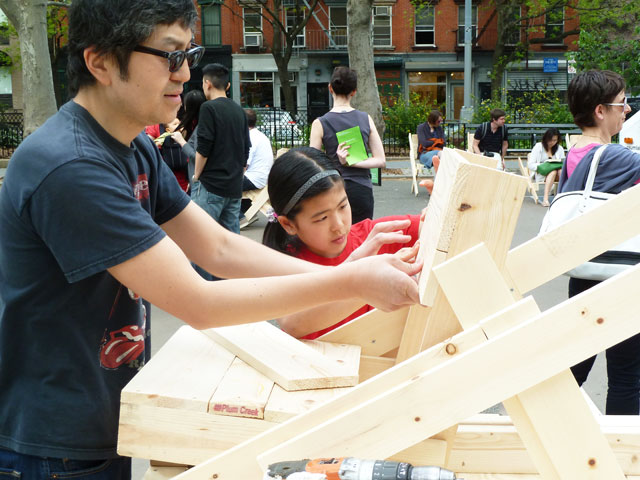
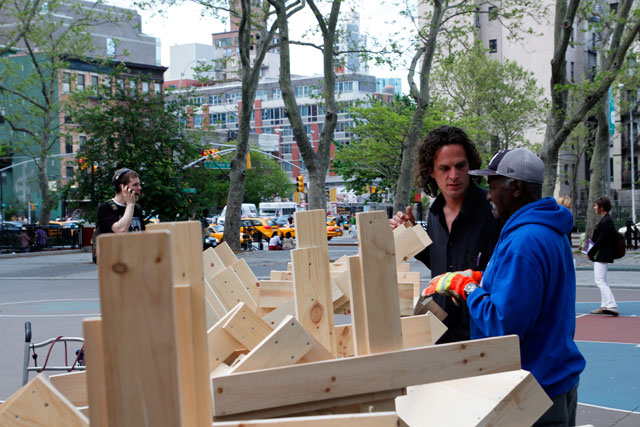
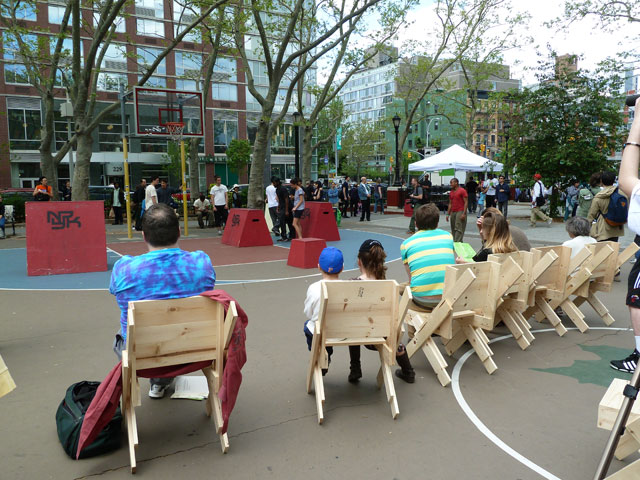
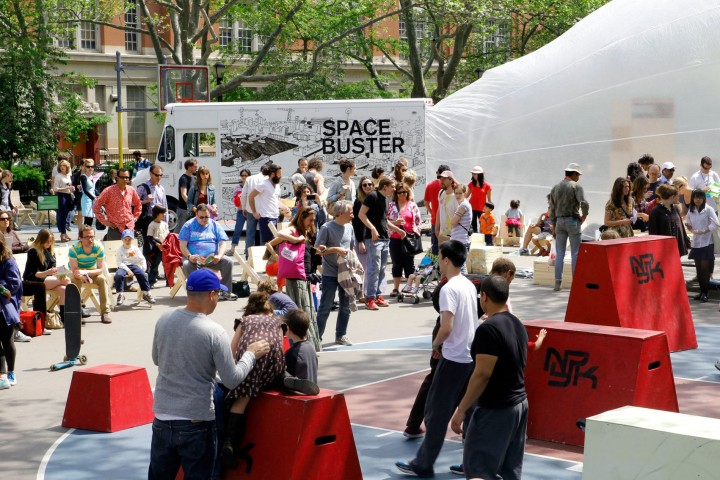
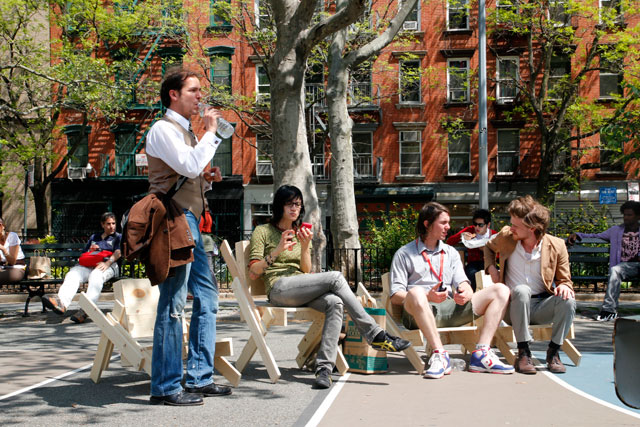
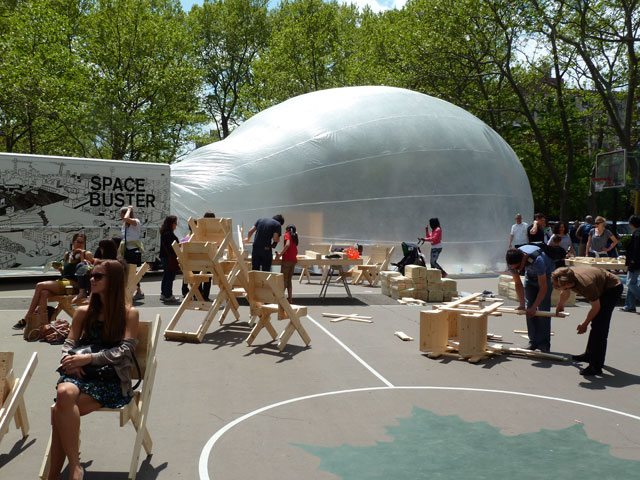
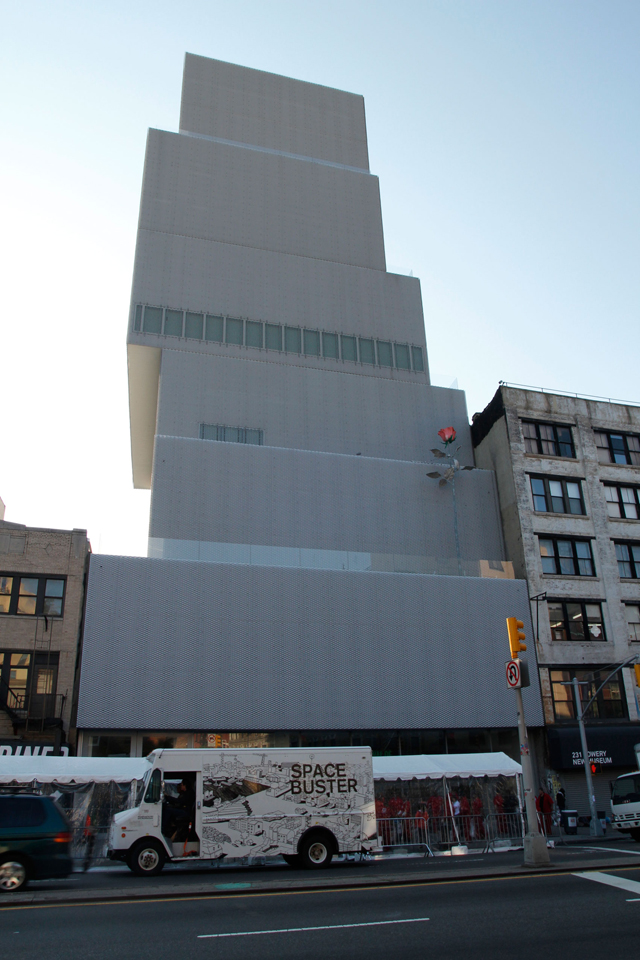

THE GENERATOR is an experimental building laboratory for instant, participatory building practices in public space. Central issues of the research include: construction principles, new geometries for furniture and lightweight construction buildings, as well as new use possiblities and multiple programs for people to meet and interact in public.
DER GENERATOR ist ein experimentelles Baulabor für eine plötzliche, partizipatorische Entwurfs- und Baupraxis im öffentlichen Raum. Das zentrale Thema dieser Versuchsanordnung sind Konstruktionsprinzipien, neue Geometrien für Alltagsmöbel und Leichtbaukonstruktionen ebenso wie neue Nutzungsformen und vielfältige Programme, die die Öffentlichkeit anregen, gemeinsam eine Vision zu verwirklichen, zu interagieren, Erfahrung und Expertise auszutauschen. Der Generator erforscht Möglichkeiten des gemeinsamen Handelns im öffentlichen Raum.
The Generator consists of two components: hardware and software. The hardware is a workstation designed for mobility. A set of several flight cases can be assembled as two workbenches. They contain all the necessary tools for eight people to work on site using simple wood slats and plywood as building materials.
Der Generator besteht aus zwei Komponenten, der Hardware und der Software.
Die Hardware ist eine mobile Werkbank, die alle notwendigen Werkzeuge
für die zeitgleiche Arbeit für bis zu 10 Leuten beinhaltet sowie eine ausklappbare Werkbank. Die Werkzeuge dienen der Bearbeitung von einfachen Rauspundbrettern, Sperrholz und Schrauben. Der Generator ist leicht beweglich und kann so innerhalb kürzester Zeit zu einer kleinen Werkstatt aufgebaut werden.
The software is a set of construction plans and instructions for modules, which are developed for easy assembly. The construction methods will be constantly tested and improved. The modules can be assembled into chairs, tables, and shelves, as well as walls and shelters. The participants can transform the modules accidentally or intentionally. A process of learning by doing. The team will record and reuse all possible mutations of the system and incorporate them into a growing structure.
Die Software besteht aus einem Set von Plänen, Bauanleitungen und gegebenenfalls Schablonen für den schnell erlernbaren Bau von Objekt- und Raummodulen. Die Module können zu Stühlen, Bänken, Tischen etc. kombiniert werden aber auch zu Wänden und kleinen Raummodulen. Beim Bauen können die TeilnehmerInnen die Software ändern, weiterentwickeln, perfektionieren, erneuern – absichtlich oder auch zufällig.
Ein learning-by-doing Prozess.
